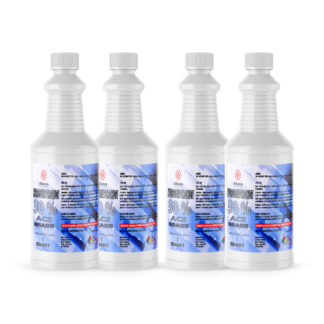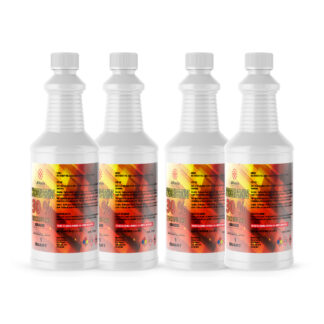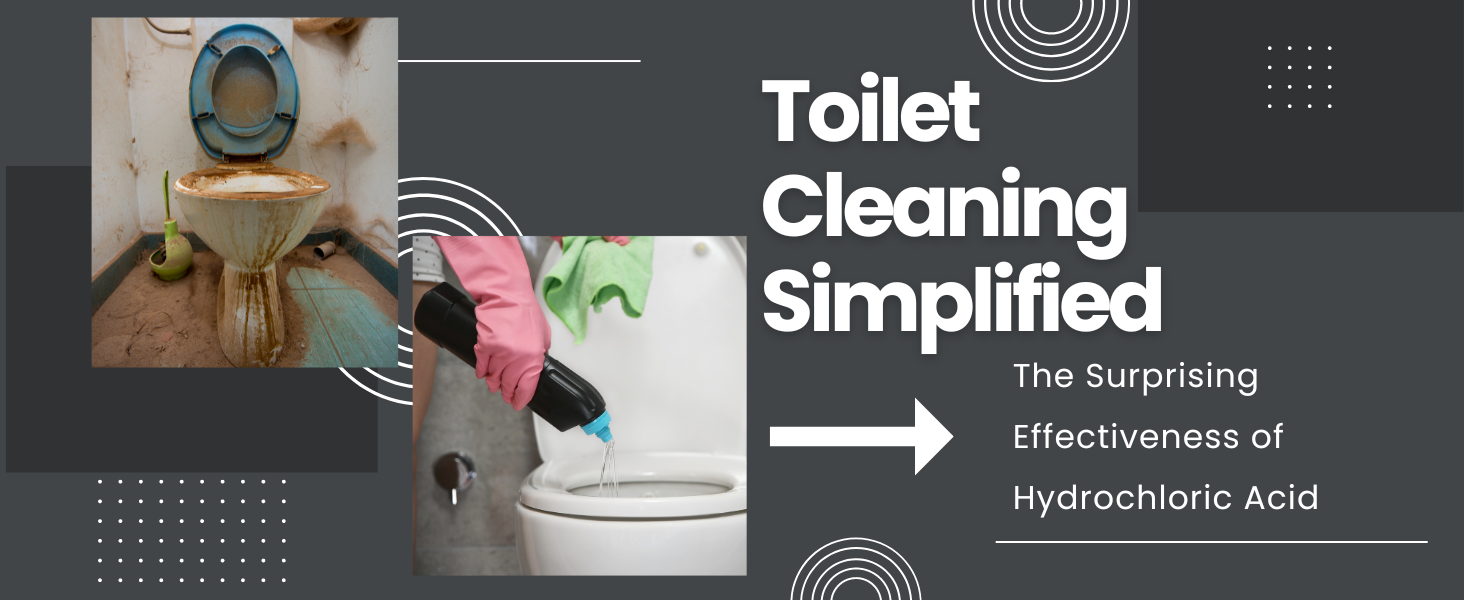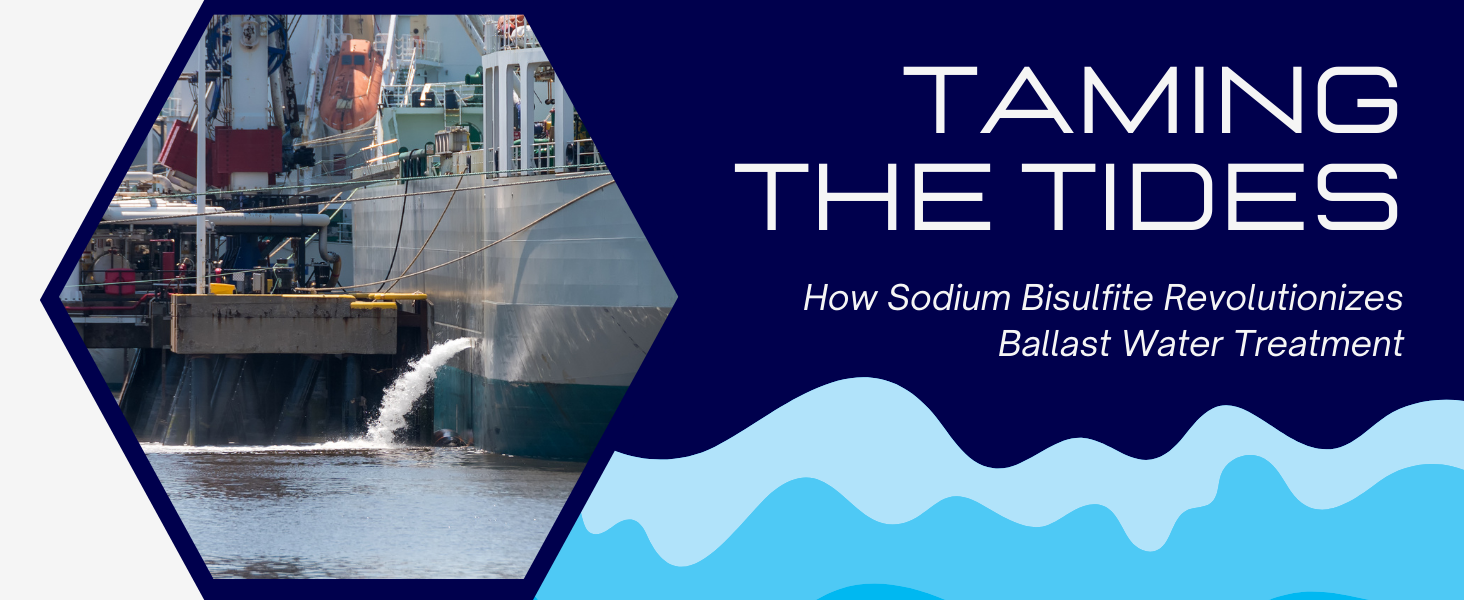
How to Use Hydrogen Peroxide: A Comprehensive Guide for Industries and Consumers
Table of Contents
- 1. Introduction to Hydrogen Peroxide
- 2. The Science Behind Hydrogen Peroxide
- 3. Industrial Applications of Hydrogen Peroxide
- 4. Hydrogen Peroxide in Daily Life
- 5. Safety and Handling Guidelines
- 6. Environmental Impact and Sustainability
- 7. Future of Hydrogen Peroxide
- 8. Conclusion
- 9. References and Further Reading
Introduction to Hydrogen Peroxide
Hydrogen peroxide, a simple yet powerful compound, has carved its niche in both industrial and consumer sectors due to its versatile properties. Known chemically as H₂O₂, it appears as a clear, colorless liquid at room temperature. Despite its unassuming appearance, hydrogen peroxide is celebrated for its oxidizing capabilities, making it an effective disinfectant, bleaching agent, and more.
The Genesis of Hydrogen Peroxide
The discovery of hydrogen peroxide dates back to the 19th century, but its widespread application has evolved significantly over the years. Originally used for medicinal purposes, its scope has broadened, encompassing a variety of industries today.
Understanding Its Composition and Form
At its core, hydrogen peroxide is a combination of hydrogen and oxygen. This simple structure belies its reactive nature, which is the cornerstone of its effectiveness. Available in various concentrations, it can be tailored to suit specific needs, from delicate medical applications to robust industrial processes.
A Glimpse into Its Versatility
The utility of hydrogen peroxide extends beyond its traditional role as a disinfectant. Its application ranges from sterilizing medical equipment to treating wastewater, highlighting its adaptability. This guide aims to explore these multifaceted uses, shedding light on why hydrogen peroxide is a substance of significant interest in numerous fields.
The Science Behind Hydrogen Peroxide
Hydrogen peroxide (H₂O₂) is more than just a simple compound; it’s a fascinating substance with unique chemical and physical properties. Its role in various applications, from sterilization to bleaching, is underpinned by its scientific characteristics. This section explores the intricate details of hydrogen peroxide’s chemical makeup and how these properties translate into its practical uses.
2.1 Chemical Properties
Chemically, hydrogen peroxide is composed of two hydrogen atoms and two oxygen atoms. This seemingly simple structure hides a complex and reactive nature. Unlike water, the extra oxygen atom in hydrogen peroxide makes it an unstable compound. It’s this instability that gives it powerful oxidizing properties, surpassing even chlorine in some respects.
Hydrogen peroxide can exist in various states, from a clear, colorless liquid at room temperature to a solid when frozen. It’s slightly more viscous than water, a characteristic that can be observed in higher concentrations. Its stability is highly dependent on environmental factors like temperature, pH level, and light exposure. In its purest form, hydrogen peroxide is a powerful and sometimes dangerous oxidant, but when diluted, it becomes safer for general use, which is why it’s commonly found in concentrations ranging from 3% to 30% for different applications.
2.2 How Hydrogen Peroxide Works
The magic of hydrogen peroxide lies in its ability to release oxygen when it decomposes. This decomposition can be triggered by various catalysts, including light, heat, or the presence of certain metals and enzymes. When it breaks down, it forms water and oxygen, a reaction that is both simple and powerful. This released oxygen is in a highly reactive state, known as a free radical. These free radicals are what make hydrogen peroxide an effective disinfectant, as they attack and break down the cell walls of bacteria, viruses, and fungi.
In industrial applications, the oxidizing power of hydrogen peroxide is harnessed for processes like bleaching paper and textiles, treating wastewater, and even in certain manufacturing processes. The decomposition reaction, which is essentially a controlled release of oxygen, can be finely tuned to suit specific industrial needs, making hydrogen peroxide a versatile tool in many sectors.

Industrial Applications of Hydrogen Peroxide
Hydrogen peroxide’s utility extends far and wide, impacting numerous industrial sectors with its unique chemical properties. As an eco-friendly, powerful oxidizer and disinfectant, it has found extensive applications in healthcare, manufacturing, and agriculture, among others. This section delves into how hydrogen peroxide is revolutionizing practices in these industries.
3.1 In Healthcare
The healthcare industry relies heavily on hydrogen peroxide for its antiseptic and disinfectant qualities. It’s used for sterilizing surgical instruments, endoscopes, and other medical devices, ensuring the highest levels of hygiene. Furthermore, in low concentrations, it’s used in wound care products, serving as a mild antiseptic. Its role in the dental industry as a teeth whitening agent and oral debrider also highlights its versatility. The fact that it breaks down into water and oxygen post-use minimizes environmental concerns, making it a preferred choice in healthcare settings.
3.2 In Manufacturing
In the realm of manufacturing, hydrogen peroxide’s oxidizing properties have been harnessed for bleaching and purifying purposes. The textile industry uses it for bleaching cotton and wool, ensuring that the fibers retain their strength and color vibrancy. In paper manufacturing, it’s a key agent in the pulp bleaching process, contributing to brighter, higher-quality paper products. The electronics industry also benefits from hydrogen peroxide in the cleaning and etching of printed circuit boards. Additionally, its use in environmental control systems for treating emissions and industrial effluents underscores its role in sustainable manufacturing practices.
3.3 In Agriculture
In agriculture, hydrogen peroxide is a game-changer. It’s used for soil fumigation, effectively controlling soil-borne pathogens and enhancing seed germination and root development. In greenhouse environments, it purifies water systems, protecting plants from various diseases. The aquaculture sector utilizes hydrogen peroxide to treat infections in fish and improve overall water quality. It’s also used in food processing as a sanitizer to ensure the safety and cleanliness of produce. Its biodegradability and non-toxic breakdown products make it a sustainable and eco-friendly choice in agricultural practices.
Hydrogen Peroxide in Daily Life
Beyond its industrial applications, hydrogen peroxide plays a significant role in everyday life. Its safe, effective, and eco-friendly properties make it a popular choice in household cleaning and personal care. This section explores how hydrogen peroxide can be a part of our daily routines, making life cleaner and healthier.
4.1 Household Cleaning
In the realm of household cleaning, hydrogen peroxide is a powerhouse. It’s an excellent disinfectant, capable of killing bacteria, viruses, and fungi on a variety of surfaces. It can be used to clean countertops, cutting boards, and bathroom fixtures, ensuring a germ-free environment. Its bleaching properties also make it ideal for removing stains from clothes and brightening white fabrics. Furthermore, hydrogen peroxide is effective in removing mold and mildew, making it a vital tool in maintaining a clean and healthy home.
4.2 Personal Care
Hydrogen peroxide’s role extends to personal care, where it’s used for its antiseptic and bleaching properties. It’s a common ingredient in tooth-whitening products, helping to remove stains and brighten teeth. In low concentrations, it’s used as a mouthwash, promoting oral hygiene by killing harmful bacteria. It’s also used in some hair bleaching products, offering a less harsh alternative to other chemical treatments. Additionally, its antiseptic properties make it useful for minor wound cleaning, helping to prevent infection.
-
 Hydrogen Peroxide 30% ACS Grade$45.00 – $6,000.00
Hydrogen Peroxide 30% ACS Grade$45.00 – $6,000.00 -
 Hydrogen Peroxide 30% Technical$37.00 – $5,300.00
Hydrogen Peroxide 30% Technical$37.00 – $5,300.00
Safety and Handling Guidelines
While hydrogen peroxide is an invaluable compound in many applications, its handling and usage require careful consideration to ensure safety. This section outlines the essential guidelines for safely using, storing, and disposing of hydrogen peroxide, whether in industrial settings or at home.
Understanding Concentrations
Hydrogen peroxide is available in various concentrations, and the risks associated with its use increase with concentration. Lower concentrations (typically up to 3%) are generally safe for household use with standard precautions. Higher concentrations, used in industrial settings, require more stringent safety measures.
Safe Handling Practices
When handling hydrogen peroxide, it’s crucial to wear appropriate protective gear, including gloves, eye protection, and clothing that covers skin to prevent irritation or burns. In industrial settings, additional protective equipment like face shields and aprons may be necessary.
Storage and Stability
Hydrogen peroxide should be stored in a cool, dry place, away from direct sunlight and heat sources. It’s also important to keep it in its original container or a container made of compatible materials, as hydrogen peroxide can react with certain metals and plastics.
First Aid Measures
In case of skin or eye contact with hydrogen peroxide, immediately rinse the affected area with plenty of water. For higher concentration exposures or ingestion, seek medical attention promptly.
Environmental Considerations and Disposal
Hydrogen peroxide is environmentally friendly, breaking down into water and oxygen. However, disposing of high concentrations, especially in industrial contexts, should follow local environmental regulations to avoid potential hazards.
Environmental Impact and Sustainability
Hydrogen peroxide is not only valued for its effectiveness but also for its environmental friendliness. This section examines the environmental impact of hydrogen peroxide and its role in promoting sustainability in various industries.
Biodegradability and Eco-Friendliness
One of the most significant advantages of hydrogen peroxide is its biodegradability. When it decomposes, it breaks down into water and oxygen, leaving no harmful residues. This characteristic makes it a more environmentally friendly alternative to many chemical agents that can leave toxic byproducts.
Role in Reducing Pollution
In industrial applications, hydrogen peroxide is used to treat wastewater and reduce pollutants. Its ability to oxidize harmful substances helps in purifying water and making industrial processes more eco-friendly. This is particularly important in industries like textile and paper manufacturing, where it replaces more harmful chemicals in bleaching processes.
Contribution to Sustainable Practices
The use of hydrogen peroxide in agriculture and aquaculture as a non-toxic alternative to pesticides and disinfectants exemplifies its role in sustainable practices. It enhances the environmental safety of these sectors by reducing the reliance on chemicals that can accumulate in ecosystems.
Considerations for Large-Scale Use
Despite its eco-friendly nature, the handling and disposal of hydrogen peroxide, especially in large quantities, must be managed responsibly. Proper storage and disposal practices are essential to prevent environmental harm and ensure safety, particularly in industrial settings.
Future of Hydrogen Peroxide
The future of hydrogen peroxide looks promising, with ongoing research and technological advancements expanding its applications and efficiency. This section explores the potential developments and innovations in the world of hydrogen peroxide, foreseeing its evolving role in various sectors.
Advancements in Production Techniques
Continuous improvements in the production of hydrogen peroxide are making it more efficient and cost-effective. Emerging technologies are focusing on eco-friendlier production methods that could reduce energy consumption and minimize environmental impact.
New Applications and Innovations
Research is exploring new uses of hydrogen peroxide, including advanced medical therapies, innovative cleaning solutions, and its use in renewable energy sectors. Its potential in environmental protection, particularly in more effective water treatment methods, is also a promising area of development.
Enhancing Safety and Stability
Efforts are being made to enhance the safety and stability of hydrogen peroxide, particularly in higher concentrations. This includes the development of new formulations and stabilizers that could make high-concentration hydrogen peroxide safer for transport and use, expanding its applicability.
Integration with Emerging Technologies
Hydrogen peroxide’s integration with other emerging technologies, such as nanotechnology and biotechnology, could lead to breakthroughs in various fields. This integration has the potential to revolutionize how hydrogen peroxide is used, making it a key component in cutting-edge scientific and industrial applications.

Conclusion
Hydrogen peroxide is a remarkable compound with a wide array of applications that span from industrial use to everyday household tasks. Its unique chemical properties – being an effective oxidizer, a disinfectant, and an eco-friendly alternative to more harmful chemicals – make it an invaluable resource in numerous sectors.
This guide has explored the diverse uses of hydrogen peroxide, its role in different industries, and the safety and environmental considerations associated with its use. The ongoing developments and potential future applications of hydrogen peroxide promise to further enhance its utility and effectiveness in various fields.
As we move towards more sustainable and environmentally conscious practices, the importance of hydrogen peroxide is likely to grow. Its ability to break down into harmless byproducts (water and oxygen) positions it as a preferred choice in many applications, aligning with global efforts to protect and preserve our environment.
In summary, hydrogen peroxide is not just a chemical compound but a versatile tool that continues to contribute to advancements in health, cleanliness, environmental protection, and beyond. Its future is as bright and dynamic as its chemistry, and it will undoubtedly continue to play a significant role in shaping a cleaner, safer, and more sustainable world.
References and Further Reading
The following references provide a broad spectrum of information on hydrogen peroxide, encompassing its chemical nature, diverse applications, and safety measures.
- Easton MF, Mitchell AG, Wynne-Jones WF (1952). “The behavior of mixtures of hydrogen peroxide and water. Part 1.” Transactions of the Faraday Society. 48: 796–801.
- “Hydrogen Peroxide.” Chemsrc.com. Archived from the original on 17 March 2020.
- NIOSH Pocket Guide to Chemical Hazards. “#0335.” National Institute for Occupational Safety and Health.
- Housecroft CE, Sharpe AG (2005). Inorganic Chemistry (2nd ed.). Pearson Prentice-Hall.
- Hill CN (2001). A Vertical Empire: The History of the UK Rocket launch and Space Programme, 1950–1971. Imperial College Press.
- Brauer G, ed. (1963). Handbook of preparative inorganic chemistry. Vol. 1.
- Giguère PA (1950). “The Infra-Red Spectrum of Hydrogen Peroxide”. Journal of Chemical Physics. 18 (1).
- Hunt RH, Leacock RA, Peters CW, Hecht KT (1965). “Internal-Rotation in Hydrogen Peroxide: The Far-Infrared Spectrum and the Determination of the Hindering Potential.” The Journal of Chemical Physics. 42 (6).
- Ball R, Brindley J (March 2016). “The Life Story of Hydrogen Peroxide III: Chirality and Physical Effects at the Dawn of Life.” Origins of Life and Evolution of the Biosphere. 46 (1).
- Dougherty DA, Anslyn EV (2005). Modern Physical Organic Chemistry. University Science.
These references offer a detailed understanding of hydrogen peroxide’s properties, safety guidelines, and its significant role in various industrial and everyday applications.













